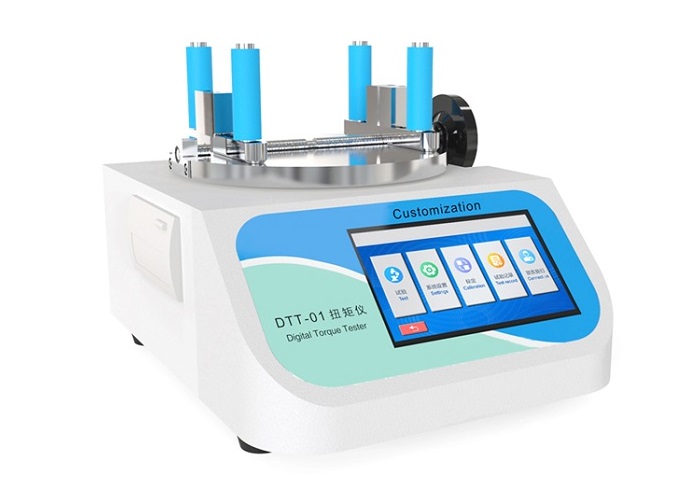Guide for using digital cap torque tester
The digital cap torque tester can effectively and reasonably evaluate the tightness and applicability of product packaging, help manufacturers determine relevant technical requirements and provide scientific data reference basis. This article will introduce the manual of digital cap torque tester, the details are as follows:
Application:
|
Basic Application |
Bottle Package |
Open and lock force test of the bottle caps for bottled packages for food, pharmaceuticals, e.g. beverage or tablet bottles |
|
Flexible Tube Package |
Open and lock force test of flexible tube packages for food, pharmaceuticals and cosmetics, e.g. eye-drop, hand cream and shoe polish |
|
|
Extended Application |
Application & Removal Torque of Screw Nut |
Open and lock force test of the screws |
|
Vacuum Flask and Vacuum Cup |
Open and lock force test of the caps of vacuum flasks and vacuum cups |
Precautions for using the digital cap torque tester:

1.For clamping of the specimen: As a kind of digital torque tester, when clamping the sample, besides relying on the positioning function of the four clamping column roots, you can fine-tune it manually if necessary to keep the sample vertical; for plastic bottles, pay attention to observation during the clamping process. At the same time, avoid that the clamping force is too large, causing the sample to skew after deformation.
2.For automatic tightening and opening testing instruments: The clamps holding the bottle caps should be tightly tight. Too loose clamping will cause slipping and idling. Too tight clamping will increase the friction between the bottle cap and the bottle mouth and increase the measured value; When doing a tightening test, during the tightening process, the bottle cap will drop, and the clamp that clamps the bottle cap will also drop. Therefore, the clamping device of the bottle cap should not be lowered at the beginning of the test, and sufficient drop margin should be reserved .
3.Pilferproof closure: Pay attention to the steady down pressure when manual operation. If possible, use an automatic tester as much as possible to press the cylinder down to make the value more accurate.
Cautions of digital cap torque tester:
1.The instrument should be placed on a stable test platform without any jitter to ensure the accuracy of the instrument.
2.The user can turn the calibration potentiometer only when the instrument needs to be calibrated, otherwise any adjustment is prohibited to avoid destroying the calibration data.
3.When the test torque exceeds the maximum range of the current instrument, a buzzer will continuously alarm, and the user should stop applying force to avoid permanent damage to the sensor.
4.During the initial test of the instrument, if the buzzer emits a continuous short "di" alarm and cannot be used normally, the sensor may have caused permanent damage or the zero drift is too large. Please turn off the instrument power and call the after-sales service personnel in time!
5.It is strictly forbidden for liquid to enter the inside of the instrument